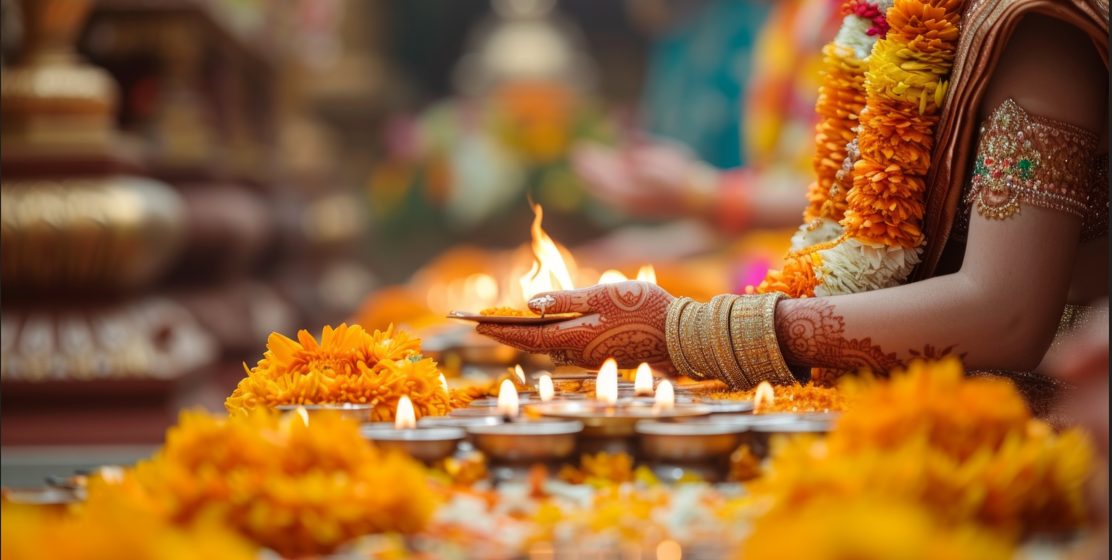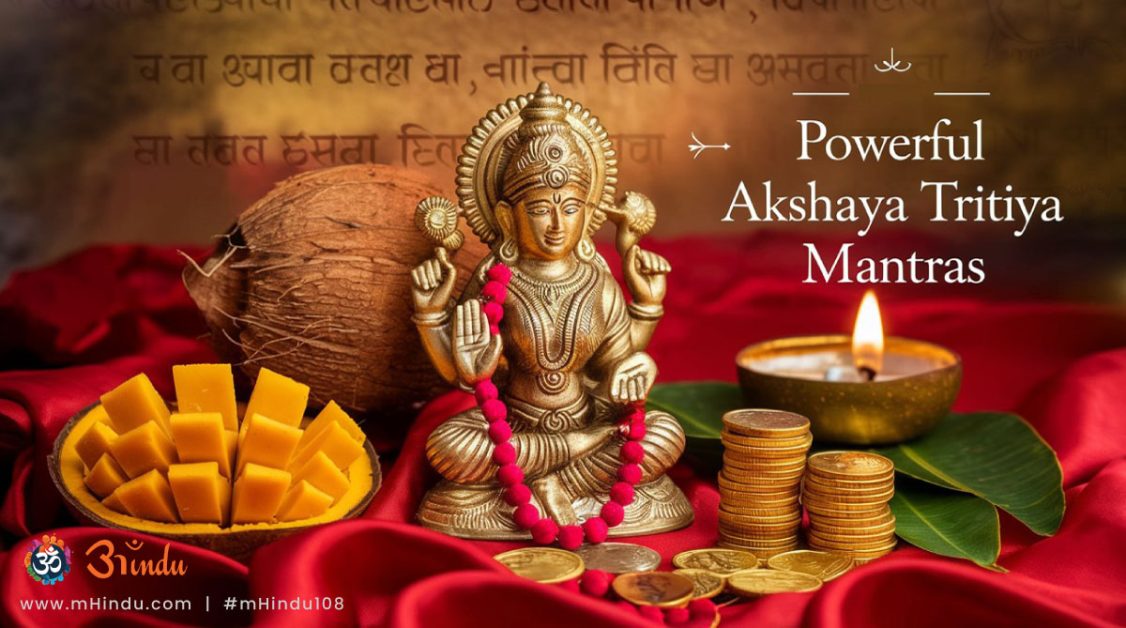
Introduction
Daily puja is a sacred practice in Hinduism that helps maintain spiritual discipline and strengthens one’s connection with the divine. Performing puja at home purifies the mind, fills the environment with positivity, and invites divine blessings. This guide provides a step-by-step process for performing a simple yet meaningful daily puja.
Explore Blog Content
ToggleImportance of Daily Puja
Puja is more than just lighting a lamp or offering flowers; it is an act of devotion that aligns the soul with the divine energies of the universe. In Hindu tradition, daily prayers help in maintaining purity, discipline, and a sense of gratitude. It fosters spirituality and strengthens the bond with God.
"Daily puja is not just a ritual; it is a moment of surrender, gratitude, and spiritual connection. It reminds us that divinity resides within and around us, guiding us on the path of righteousness and peace."
Essential Items for Puja
Before beginning your daily worship, gather the necessary puja items:
- Idols or pictures of deities
- A diya (lamp) with oil/ghee and a cotton wick
- Incense sticks (Agarbatti)
- Fresh flowers and garlands
- A bell for invocation
- Water in a small vessel (Kalash)
- Kumkum, Haldi, and Chandan (sandalwood paste)
- Prasad (offering like fruits or sweets)
- Aarti plate with camphor or ghee lamp
- A sacred cloth (Asana) for sitting
Step-by-Step Guide to Performing Daily Puja
1. Prepare Yourself and the Puja Space
- Take a bath and wear clean clothes.
- Clean the puja area and arrange all items neatly.
- Light a diya and incense sticks to purify the surroundings.
2. Invoke the Divine (Dhyana & Sankalpa)
- Sit on a clean cloth and take a few deep breaths.
- Close your eyes and meditate on your Ishta Devata (chosen deity).
- Mentally offer your prayers and state your intentions (Sankalpa).
3. Offerings to the Deity (Upachara Puja)
Each offering is done with devotion and love:
- Pushpam (Flowers): Offer fresh flowers or garlands to the deity.
- Dhoop (Incense): Light incense sticks and wave them before the deity.
- Deepam (Lamp): Rotate the diya clockwise before the idol.
- Naivedyam (Food Offering): Offer prasad like fruits, sweets, or homemade food.
- Achaman (Water Offering): Sprinkle or offer water symbolically.
4. Chanting Mantras and Stotras
Chanting mantras creates a divine atmosphere. Some commonly recited prayers include:
- Gayatri Mantra – “Om Bhur Bhuvah Swaha…”
- Maha Mrityunjaya Mantra – “Om Tryambakam Yajamahe…”
- 108 Names of Vishnu/Shiva/Durga
- Hanuman Chalisa or Vishnu Sahasranama
5. Aarti (Divine Worship through Light)
- Light camphor or a ghee lamp and perform Aarti while singing devotional songs.
- Use a bell and clap hands while singing.
- Move the Aarti plate in circular motions before the deity.
6. Prarthana and Shanti Mantras
- Offer prayers for family well-being and peace.
- Recite the “Lokah Samastah Sukhino Bhavantu” prayer.
7. Conclude the Puja (Visarjan)
- Seek the blessings of the deity and bow down with folded hands.
- Distribute prasad among family members.
- Extinguish the diya safely and clean the puja area.
"A man is but the product of his thoughts; what he thinks, he becomes."Mahatma Gandhi
Benefits of Performing Daily Puja
Performing daily puja provides numerous benefits:
- Spiritual Upliftment: Enhances peace and inner harmony.
- Positive Energy: Purifies the surroundings and attracts good vibrations.
- Discipline & Devotion: Strengthens faith and regular spiritual practice.
- Blessings & Protection: Invokes divine grace for well-being.
- Cultural Connection: Preserves and passes on traditions to future generations.
Common Mistakes to Avoid in Puja
- Performing puja without proper cleanliness.
- Using wilted flowers or stale food for offerings.
- Rushing through the rituals without devotion.
- Ignoring mantra pronunciation or reciting incorrectly.
- Disposing of sacred items improperly.
Conclusion
Performing daily puja is a divine way to stay connected with God and maintain spiritual discipline. It brings positivity, devotion, and blessings into our lives. By following this step-by-step guide, anyone can conduct a simple yet meaningful puja at home and experience its divine benefits.
FAQs:
- What is the best time to perform daily puja at home?
The most auspicious times for daily puja are generally considered to be Brahma Muhurta (early morning before sunrise) and Sandhya Kaal (evening twilight). However, you can perform puja at any time that suits your schedule, as long as it’s done with sincerity and devotion. Consistency is more important than a specific time. - Can I perform puja if I don’t have idols or pictures of deities?
Yes, you can. While idols and pictures are common, you can also perform puja by focusing on a symbol of the divine, such as a lit diya or a sacred object. Alternatively, you can visualize your chosen deity in your mind and offer your prayers with pure intention. - What are the essential mantras to chant during daily puja?
Essential mantras include the Gayatri Mantra, Maha Mrityunjaya Mantra, and the mantras dedicated to your Ishta Devata (chosen deity). You can also chant the 108 names of Vishnu, Shiva, or Durga, or recite the Hanuman Chalisa or Vishnu Sahasranama. The choice of mantra depends on your personal preference and the deity you are worshipping. - How do I prepare prasad for daily puja, and what can I offer?
Prasad should be prepared with cleanliness and devotion. You can offer fresh fruits, sweets, milk-based dishes, or simple homemade food. Ensure the food is vegetarian and prepared with pure ingredients. After offering, distribute the prasad among family members as a blessing. - Is it necessary to perform all the steps of the puja, or can I do a simplified version?
While performing all the steps is ideal, you can simplify the puja based on your time and resources. Even a simple offering of flowers, lighting a diya, and chanting a mantra with sincere devotion is acceptable. The key is to perform the puja with love and respect. - What should I do with the used puja items like flowers and incense ash?
Used flowers and incense ash should be disposed of respectfully. Ideally, flowers can be immersed in a river or a clean water body. Incense ash can be buried in the garden or disposed of in a designated sacred waste area. Avoid disposing of these items in regular trash bins. - How can I maintain the sanctity of the puja space in my home?
Keep the puja area clean and organized. Avoid eating or sleeping in the puja room. Regularly clean the idols and pictures, and ensure the space is free from clutter. Maintain a peaceful and serene atmosphere by playing devotional music or chanting mantras. - Can children participate in daily puja, and how can I involve them?
Yes, children can and should participate in daily puja. Involve them by assigning simple tasks like lighting the diya, arranging flowers, or ringing the bell. Explain the significance of each step and encourage them to chant mantras. This helps instill spiritual values and cultural traditions in them from a young age.






